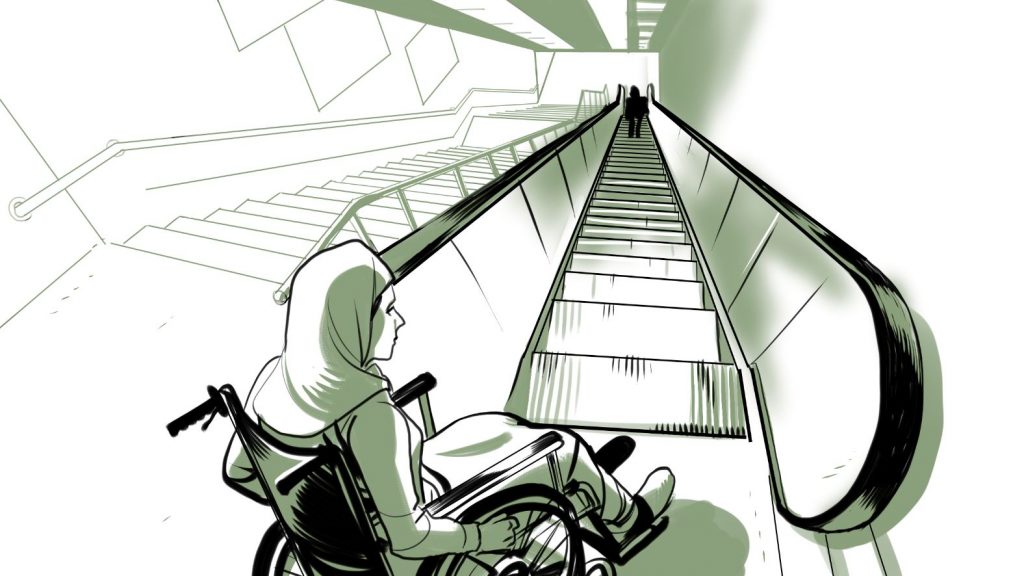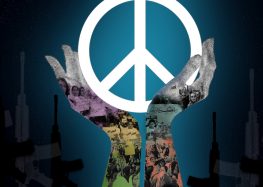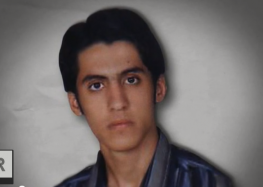Metro system
 People we interviewed faced barriers in accessing the metro system in the cities where they live. Even where elevators do exist for the metro, they are often out of service. Hassan, who uses a wheelchair, said, “It happened a lot that upon arriving at the [metro] station, I realized that the elevator was broken. So, I had to change my route to find a working elevator.”[133]
People we interviewed faced barriers in accessing the metro system in the cities where they live. Even where elevators do exist for the metro, they are often out of service. Hassan, who uses a wheelchair, said, “It happened a lot that upon arriving at the [metro] station, I realized that the elevator was broken. So, I had to change my route to find a working elevator.”[133]
Despite these barriers, some persons with physical disabilities who use wheelchairs said that since the metro is fast and more affordable, they continue to use it. They plan their route to use stations that have elevators but may need to change trains more than once or travel some part of the way along sidewalks which could add significant time to their commute.[134]
Some persons with disabilities shared that they even resort to using escalators despite the significant dangers. Hassan said:
I tried to avoid using escalators, but sometimes I had no other choice. With my heavy electronic wheelchair and my heavy body, getting on the escalator was indeed a suicide [mission]. Once, I almost fell down. Had I not been lucky, I could have sustained a deadly injury.[135]
Fatemeh, who uses a wheelchair, said,
I know it’s very dangerous. Each time I get on an escalator with my wheelchair, I prepare myself for death. But I have no other choice. I have nobody to help me.[136]
Upon reaching the platform, persons who use wheelchairs may have to ask other passengers to help them pass the gap between the train car and the platform. The same is often true upon reaching the destination station to get off the train.[137]
The Bavar Association, a prominent nongovernmental organization advocating for persons with disabilities in Iran, maintains a database of accessible transportation stations, health clinics, and government offices in the city of Tehran and some other cities. According to their map, as of October 30,2016, out of some 82 metro stations in the province of Tehran, only 11 stations were fully accessible for people with physical disabilities and blind people and five more were partially accessible.[138]




